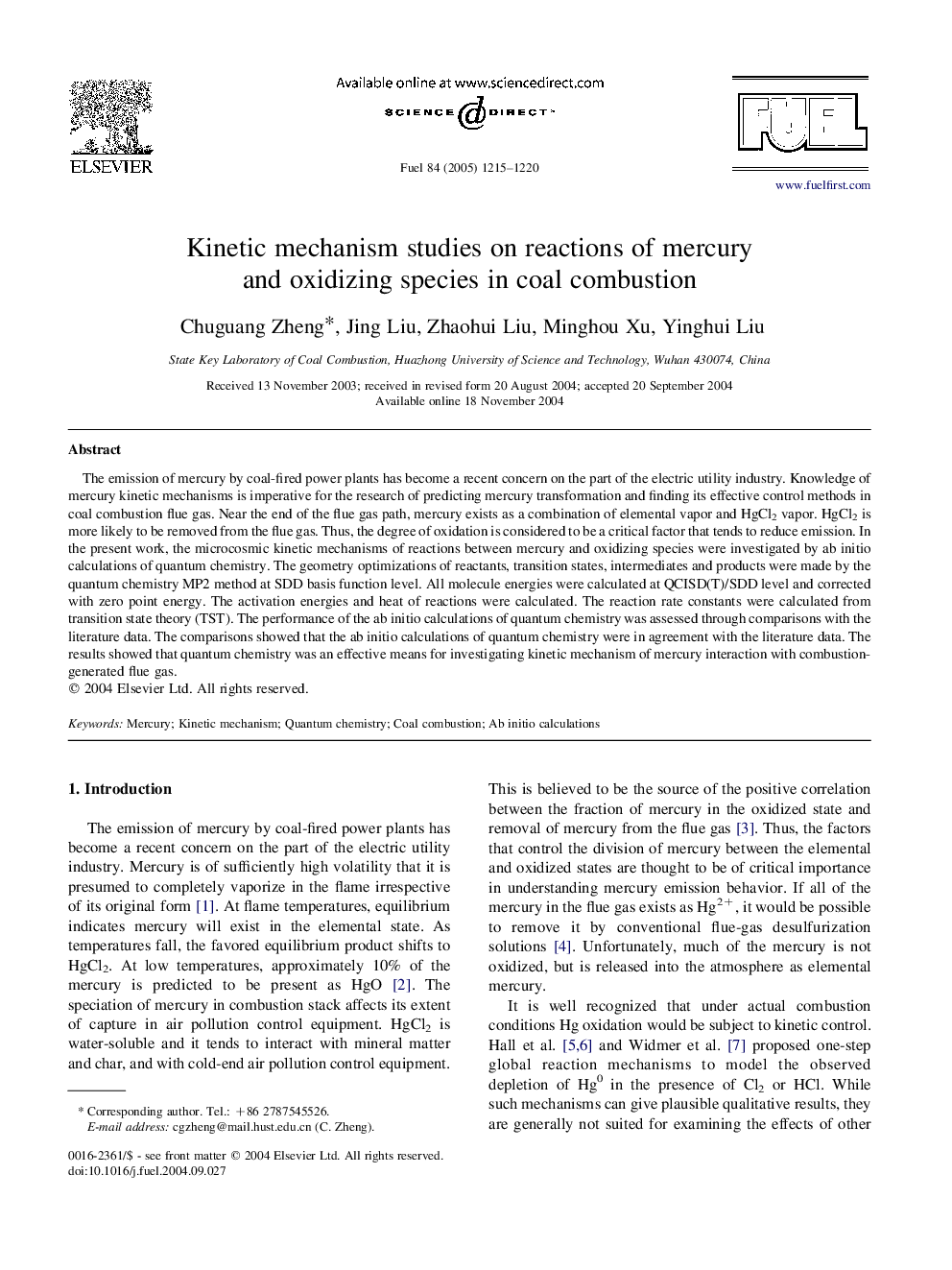| Article ID | Journal | Published Year | Pages | File Type |
|---|---|---|---|---|
| 10273442 | Fuel | 2005 | 6 Pages |
Abstract
The emission of mercury by coal-fired power plants has become a recent concern on the part of the electric utility industry. Knowledge of mercury kinetic mechanisms is imperative for the research of predicting mercury transformation and finding its effective control methods in coal combustion flue gas. Near the end of the flue gas path, mercury exists as a combination of elemental vapor and HgCl2 vapor. HgCl2 is more likely to be removed from the flue gas. Thus, the degree of oxidation is considered to be a critical factor that tends to reduce emission. In the present work, the microcosmic kinetic mechanisms of reactions between mercury and oxidizing species were investigated by ab initio calculations of quantum chemistry. The geometry optimizations of reactants, transition states, intermediates and products were made by the quantum chemistry MP2 method at SDD basis function level. All molecule energies were calculated at QCISD(T)/SDD level and corrected with zero point energy. The activation energies and heat of reactions were calculated. The reaction rate constants were calculated from transition state theory (TST). The performance of the ab initio calculations of quantum chemistry was assessed through comparisons with the literature data. The comparisons showed that the ab initio calculations of quantum chemistry were in agreement with the literature data. The results showed that quantum chemistry was an effective means for investigating kinetic mechanism of mercury interaction with combustion-generated flue gas.
Related Topics
Physical Sciences and Engineering
Chemical Engineering
Chemical Engineering (General)
Authors
Chuguang Zheng, Jing Liu, Zhaohui Liu, Minghou Xu, Yinghui Liu,
